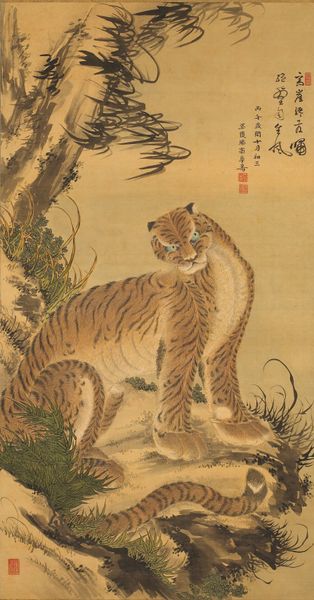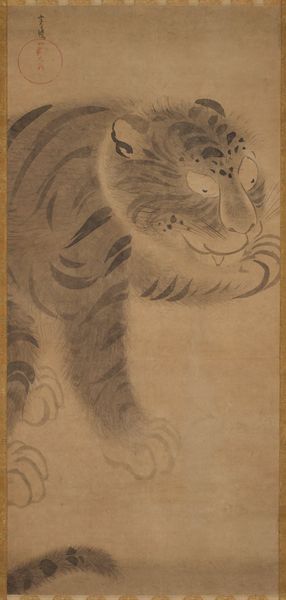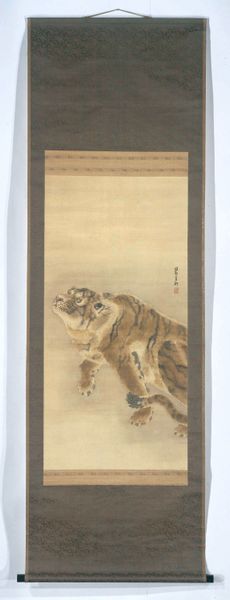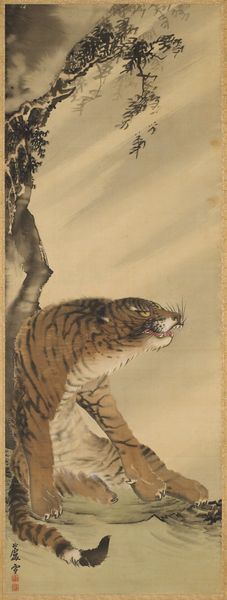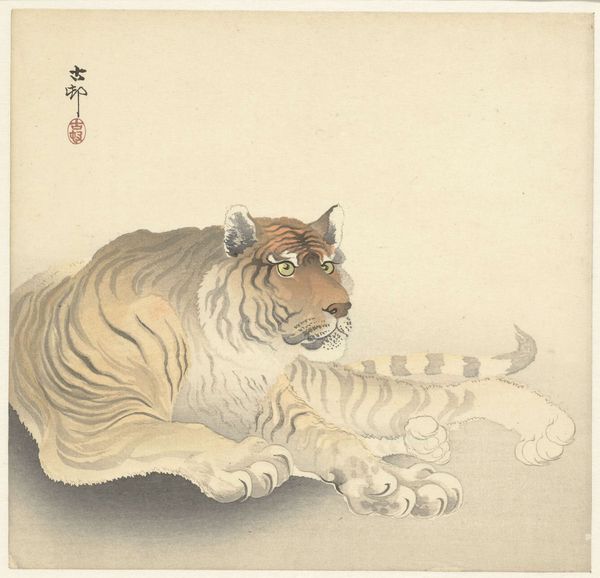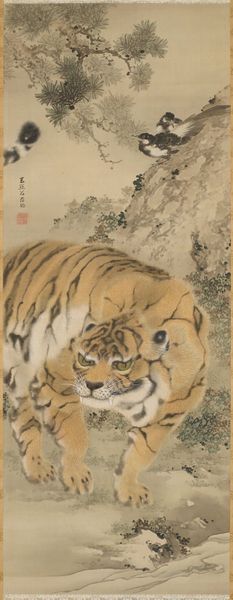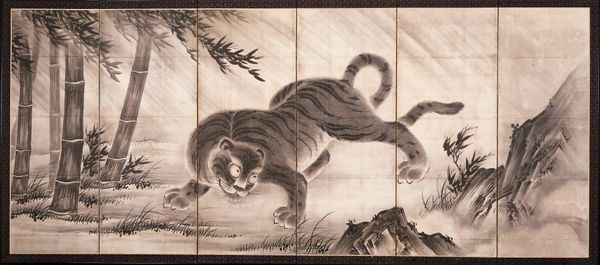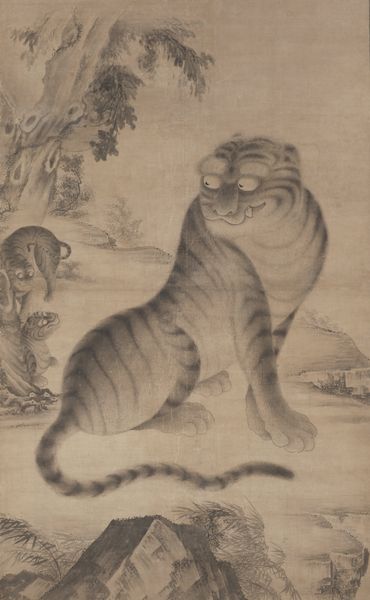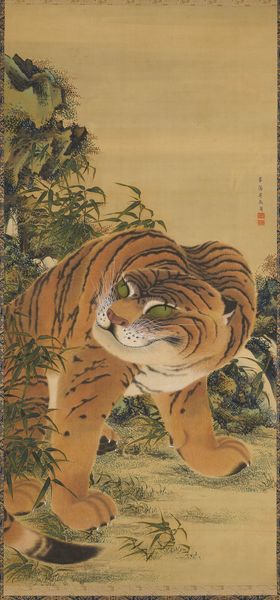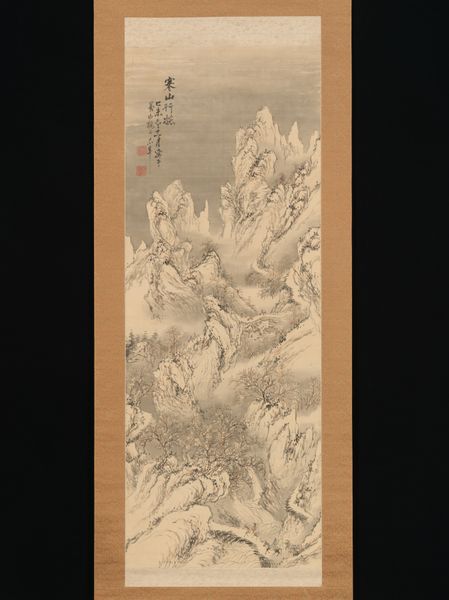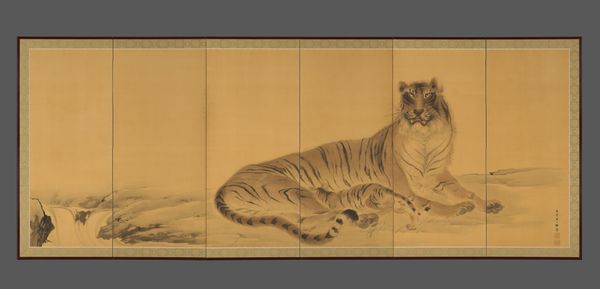
drawing, paper, ink
#
drawing
#
asian-art
#
landscape
#
figuration
#
paper
#
ink
#
orientalism
#
watercolor
Dimensions: 30 5/8 x 13 3/8 in. (77.8 x 34 cm)
Copyright: Public Domain
Curator: This hanging scroll presents a drawing called "Tiger" created sometime between 1700 and 1733 by Meisō. The artwork is part of the collection at the Metropolitan Museum of Art. What are your initial thoughts? Editor: Fierce! But also a little…unsettled? The tiger dominates the frame, rendered with rapid strokes, but the paper has a delicacy to it that tempers the raw power. You feel the tension of taming the wild in the very materials. Curator: Precisely. Meisō uses ink and light washes of color on paper. It's a traditional medium, yet the way he's captured the essence of the tiger—its sinuous strength—feels very immediate. Editor: The stripes, especially around the face, feel less like markings and more like applied ornamentation. They show process, right? Like how a ceramic artist adds layers of glaze to a surface? It makes me wonder, was the process more important than a completely accurate image of a tiger? Curator: That's a wonderful point. There is a dialogue here between representation and raw materials. The controlled and calligraphic execution is clearly very valued but also gives a distinct, personal quality to the painting that speaks to the artist's own way of seeing. It is full of energy. Editor: Definitely. And it makes me think about the production of the paper itself, too. What kind of labor went into making the ground for this image? The relationship between labor, material and its relationship to a final art object really interests me in a pre-industrial era. Curator: Absolutely. When we think about its creation and how it survived to still affect people so many years later we recognize that we aren't viewing it only as aesthetic creation but also an idea captured on tangible materials that have endured the test of time. Editor: Right, it makes you realize that objects contain multiple levels of meaning. You could contemplate just the tiger's symbolism or its literal composition. Either way, a world of art production, material worth, and even class structures went into this simple image on paper. Curator: Yes, and the longer that I study it, the longer it continues to be alive to me, speaking in a special visual language all its own.
Comments
No comments
Be the first to comment and join the conversation on the ultimate creative platform.
